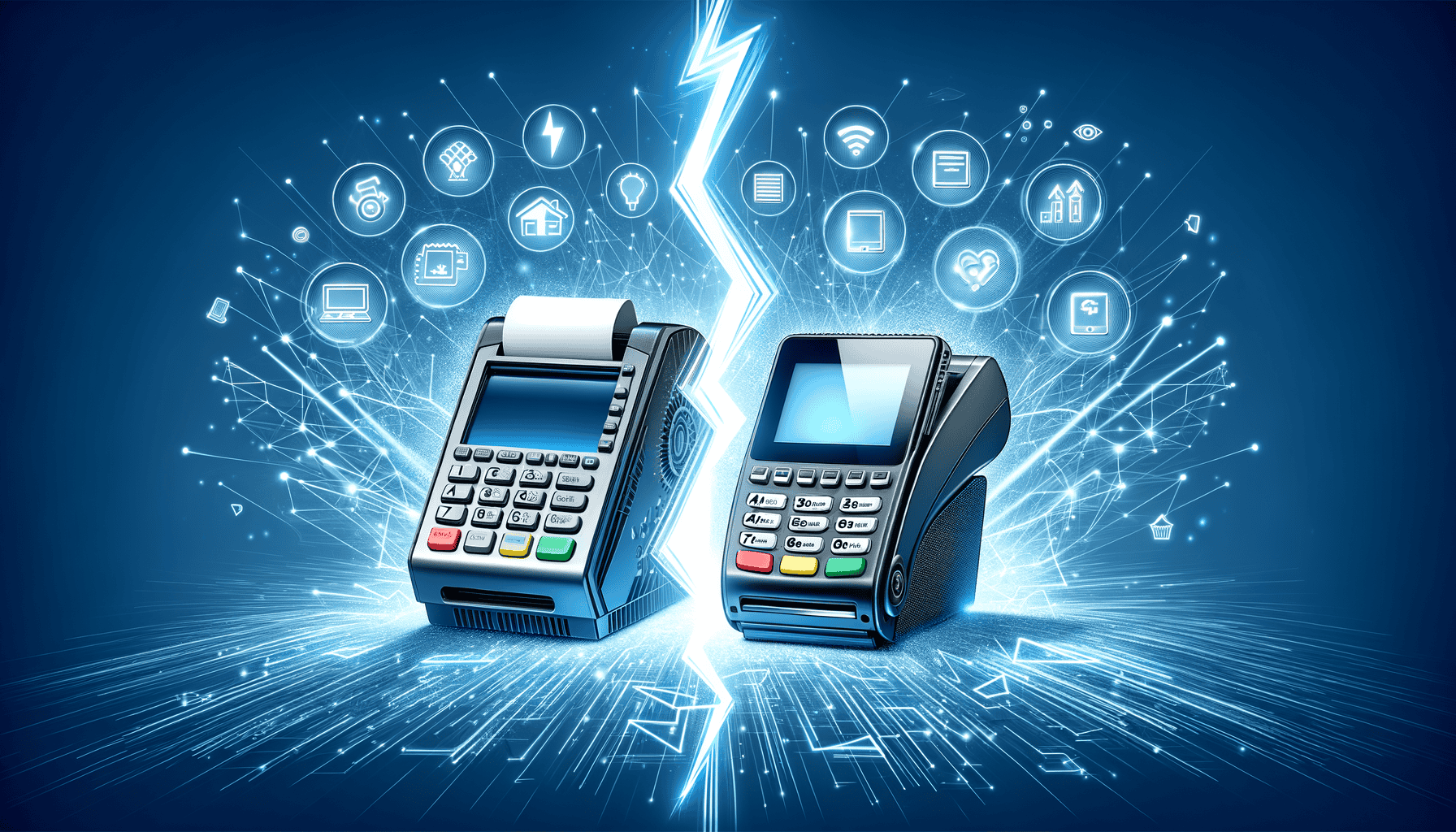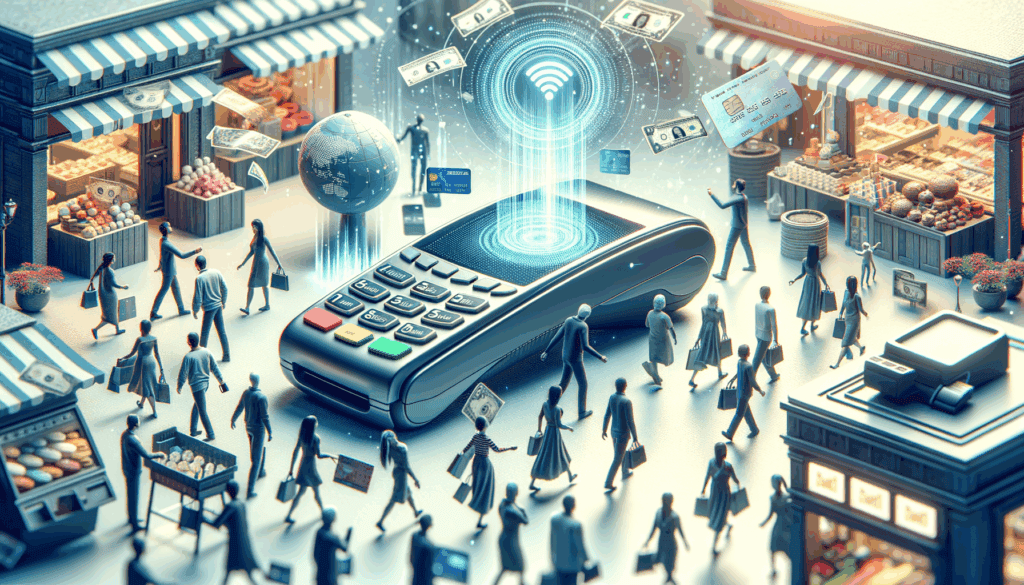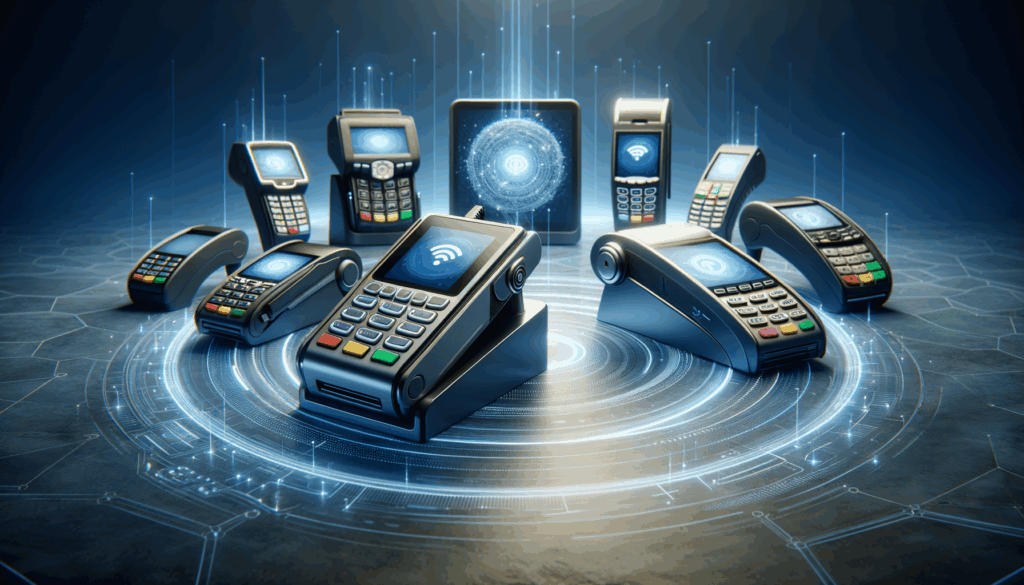
By Mary Miller May 20, 2025
In today’s fast-paced and technology-driven world, it is essential for businesses to stay ahead of the curve when it comes to payment processing. One of the most significant advancements in the payment industry in recent years is the rise of contactless payments. Contactless payments allow customers to make transactions quickly and securely by simply tapping their card or mobile device on a contactless-enabled POS terminal.
If you haven’t already upgraded your POS hardware to accept contactless payments, now is the time to do so. In this article, we will explore the reasons why upgrading your POS hardware to accept contactless payments is crucial for the success of your business.
The Rise of Contactless Payments in Today’s Market

Contactless payments have been gaining popularity in recent years, with more and more consumers opting for the convenience and security they offer. According to a report by Juniper Research, contactless payments are expected to account for over 50% of all in-store transactions by 2024. This rapid growth can be attributed to several factors, including the increasing adoption of mobile payment solutions, the rise of contactless-enabled cards, and the ongoing shift towards a cashless society.
One of the main drivers of the popularity of contactless payments is the speed and convenience they offer. With contactless payments, customers can complete transactions in a matter of seconds, making the checkout process faster and more efficient.
This is especially important in today’s fast-paced retail environment, where customers expect quick and seamless service. By accepting contactless payments, you can provide your customers with a more convenient shopping experience, which can help increase customer satisfaction and loyalty.
Another key factor contributing to the rise of contactless payments is the enhanced security they offer. Contactless payments use advanced encryption technology to protect sensitive payment information, making them more secure than traditional magnetic stripe cards. This added layer of security can help reduce the risk of fraud and unauthorized transactions, giving both you and your customers peace of mind.
Benefits of Accepting Contactless Payments at Your Business

There are several benefits to accepting contactless payments at your business. Some of the key advantages include:
1. Increased sales: By accepting contactless payments, you can cater to a wider range of customers who prefer to pay using this convenient method. This can help attract new customers and increase sales opportunities.
2. Faster transactions: Contactless payments are much quicker than traditional payment methods, allowing you to serve more customers in less time. This can help reduce wait times at the checkout and improve overall customer satisfaction.
3. Enhanced security: Contactless payments use advanced encryption technology to protect sensitive payment information, reducing the risk of fraud and unauthorized transactions. This can help build trust with your customers and protect your business from potential security threats.
4. Improved customer experience: Contactless payments offer a seamless and convenient payment experience for customers, making the checkout process quick and hassle-free. This can help enhance the overall shopping experience and encourage repeat business.
5. Future-proofing your business: As contactless payments continue to grow in popularity, accepting this payment method can help future-proof your business and ensure you stay competitive in the market.
Overall, accepting contactless payments can provide numerous benefits for your business, including increased sales, faster transactions, enhanced security, improved customer experience, and future-proofing your business.
How Contactless Payments Work
Contactless payments work by using near field communication (NFC) technology to securely transmit payment information between a contactless-enabled card or mobile device and a contactless-enabled POS terminal. When a customer taps their card or mobile device on the terminal, the two devices communicate wirelessly to complete the transaction.
The process of making a contactless payment is simple and straightforward. Here’s how it works:
1. The customer taps their contactless-enabled card or mobile device on the contactless reader at the POS terminal.
2. The terminal and the card or device communicate wirelessly using NFC technology to securely transmit payment information.
3. The transaction is authorized, and the payment is processed in a matter of seconds.
4. The customer receives a confirmation of the transaction, and the payment is completed.
Contactless payments are designed to be fast, secure, and convenient, making them an ideal payment option for both customers and businesses.
Choosing the Right POS Hardware for Contactless Payments

When upgrading your POS hardware to accept contactless payments, it is essential to choose the right equipment that meets your business needs and requirements. Here are some key factors to consider when selecting POS hardware for contactless payments:
1. Compatibility: Make sure the POS hardware you choose is compatible with contactless payment technology, such as NFC-enabled cards and mobile devices. This will ensure that you can accept contactless payments from a wide range of customers.
2. Security features: Look for POS hardware that offers advanced security features, such as encryption technology and tokenization, to protect sensitive payment information and prevent fraud.
3. Ease of use: Choose POS hardware that is user-friendly and easy to set up and operate. This will help streamline the checkout process and minimize training time for your staff.
4. Reliability: Select POS hardware that is reliable and durable to withstand the demands of a busy retail environment. Look for equipment from reputable manufacturers with a track record of quality and performance.
5. Scalability: Consider the scalability of the POS hardware to accommodate future growth and expansion of your business. Choose equipment that can easily integrate with other systems and support additional features and functionalities.
By carefully considering these factors, you can choose the right POS hardware for accepting contactless payments that meets your business needs and helps you provide a seamless payment experience for your customers.
Setting Up Your POS System for Contactless Payments
Once you have selected the right POS hardware for accepting contactless payments, the next step is to set up your POS system to enable this payment method. Here are some key steps to follow when setting up your POS system for contactless payments:
1. Install contactless-enabled POS terminals: Make sure you have contactless-enabled POS terminals that are compatible with NFC technology. These terminals should be able to communicate wirelessly with contactless-enabled cards and mobile devices to process payments.
2. Update your POS software: Ensure that your POS software is up to date and supports contactless payments. You may need to install software updates or patches to enable this functionality on your POS system.
3. Configure your POS settings: Adjust the settings on your POS system to enable contactless payments and customize the payment options available to customers. You may need to set up specific payment profiles or preferences for contactless transactions.
4. Test the system: Before accepting contactless payments from customers, conduct thorough testing of your POS system to ensure that everything is working correctly. Test different scenarios and payment methods to verify that the system is functioning as expected.
5. Train your staff: Provide training to your staff on how to process contactless payments using the POS system. Make sure they understand the steps involved in accepting contactless payments and can assist customers who have questions or issues.
By following these steps, you can set up your POS system for contactless payments and ensure a smooth and seamless payment experience for your customers.
Training Your Staff on Contactless Payments
Training your staff on how to process contactless payments is essential to ensure a smooth and efficient checkout process for your customers. Here are some key tips for training your staff on contactless payments:
1. Provide hands-on training: Demonstrate how to process contactless payments using the POS system and allow your staff to practice making transactions. This hands-on approach can help them become familiar with the process and feel confident in accepting contactless payments.
2. Explain the benefits: Educate your staff on the benefits of contactless payments, such as speed, convenience, and security. Help them understand why accepting contactless payments is important for the business and how it can improve the overall customer experience.
3. Address common questions: Anticipate common questions or concerns that customers may have about contactless payments and provide your staff with answers and solutions. Make sure they are prepared to assist customers who are unfamiliar with this payment method.
4. Emphasize security: Stress the importance of security when processing contactless payments and remind your staff to follow best practices for protecting sensitive payment information. Encourage them to be vigilant and alert for any suspicious activity.
5. Offer ongoing support: Provide ongoing support and guidance to your staff as they become more comfortable with accepting contactless payments. Encourage open communication and feedback to address any issues or challenges that may arise.
By training your staff effectively on how to process contactless payments, you can ensure that they are prepared to provide excellent customer service and handle transactions efficiently.
Addressing Security Concerns with Contactless Payments
While contactless payments offer many benefits, some businesses may have concerns about the security implications of accepting this payment method. It is essential to address these concerns and take steps to ensure that your business is compliant with security requirements when accepting contactless payments. Here are some key considerations for addressing security concerns with contactless payments:
1. Compliance requirements: Familiarize yourself with the compliance requirements for accepting contactless payments, such as the Payment Card Industry Data Security Standard (PCI DSS). Ensure that your POS system and hardware meet these requirements to protect sensitive payment information.
2. Encryption technology: Use encryption technology to secure payment data and prevent unauthorized access to sensitive information. Ensure that your POS system encrypts payment information during transmission and storage to protect against data breaches.
3. Tokenization: Implement tokenization to replace sensitive payment data with unique tokens that cannot be used for fraudulent purposes. This can help reduce the risk of data theft and enhance the security of contactless payments.
4. Secure networks: Ensure that your POS system is connected to a secure network that is protected against cyber threats and unauthorized access. Use firewalls, antivirus software, and other security measures to safeguard your payment data.
5. Employee training: Train your staff on best practices for handling contactless payments securely and responsibly. Emphasize the importance of following security protocols and procedures to protect customer information and prevent fraud.
By addressing security concerns with contactless payments and implementing robust security measures, you can protect your business and customers from potential security threats and ensure a safe and secure payment environment.
Compliance Requirements for Accepting Contactless Payments
When accepting contactless payments at your business, it is essential to comply with industry regulations and standards to protect sensitive payment information and ensure the security of transactions. One of the key compliance requirements for accepting contactless payments is the Payment Card Industry Data Security Standard (PCI DSS). PCI DSS is a set of security standards designed to protect cardholder data and prevent fraud in payment transactions. Here are some key compliance requirements for accepting contactless payments:
1. Secure transmission: Ensure that payment data is transmitted securely between the contactless-enabled card or device and the POS terminal. Use encryption technology to protect sensitive information during transmission and prevent unauthorized access.
2. Data storage: Store payment data securely and protect it from unauthorized access or theft. Implement data encryption and tokenization to safeguard sensitive information and reduce the risk of data breaches.
3. Access control: Limit access to payment data to authorized personnel only and implement strong access controls to prevent unauthorized users from accessing sensitive information. Use unique user IDs, passwords, and authentication mechanisms to protect payment data.
4. Regular monitoring: Monitor your POS system and network for any suspicious activity or security breaches. Conduct regular security assessments and audits to identify vulnerabilities and address any issues promptly.
5. Incident response: Develop an incident response plan to handle security incidents and data breaches effectively. Establish procedures for reporting security incidents, investigating breaches, and notifying affected parties in compliance with regulatory requirements.
By complying with PCI DSS and other industry regulations for accepting contactless payments, you can protect your business and customers from security threats and ensure a secure payment environment.
The Future of Contactless Payments
The future of contactless payments looks promising, with continued growth and innovation in the payment industry. As technology advances and consumer preferences evolve, contactless payments are expected to play an increasingly significant role in the way we pay for goods and services. Here are some key trends shaping the future of contactless payments:
1. Mobile wallets: The popularity of mobile wallets, such as Apple Pay, Google Pay, and Samsung Pay, is expected to continue to grow as more consumers embrace the convenience of paying with their smartphones. Mobile wallets enable contactless payments using NFC technology, making transactions quick and secure.
2. Wearable devices: The rise of wearable devices, such as smartwatches and fitness trackers, is opening up new opportunities for contactless payments. Wearable devices equipped with NFC technology allow users to make payments on the go without the need for a physical card or smartphone.
3. Biometric authentication: Biometric authentication methods, such as fingerprint scanning and facial recognition, are being integrated into contactless payment systems to enhance security and streamline the payment process. Biometric authentication adds an extra layer of protection against fraud and unauthorized transactions.
4. Internet of Things (IoT): The Internet of Things (IoT) is enabling connected devices to communicate and interact with each other, including making payments seamlessly. IoT devices, such as smart home appliances and connected cars, can be equipped with contactless payment capabilities to enable frictionless transactions.
5. Contactless transit payments: Contactless payments are expanding beyond retail environments to include public transportation systems, allowing commuters to pay for fares using contactless cards or mobile devices. Contactless transit payments offer convenience and efficiency for travelers and help reduce congestion at ticketing counters.
Overall, the future of contactless payments is bright, with continued innovation and adoption of new technologies that make payments faster, more secure, and more convenient for consumers and businesses alike.
FAQs
Q: What is a contactless payment?
A: A contactless payment is a secure payment method that allows customers to make transactions by tapping their card or mobile device on a contactless-enabled POS terminal. This technology uses near field communication (NFC) to transmit payment information wirelessly between the card or device and the terminal.
Q: How do contactless payments work?
A: Contactless payments work by using NFC technology to securely transmit payment information between a contactless-enabled card or mobile device and a contactless-enabled POS terminal. When a customer taps their card or device on the terminal, the two devices communicate wirelessly to complete the transaction.
Q: Are contactless payments secure?
A: Contactless payments are secure and use advanced encryption technology to protect sensitive payment information. Contactless transactions are encrypted during transmission and storage, making them more secure than traditional magnetic stripe cards.
Conclusion
Upgrading your POS hardware to accept contactless payments is no longer just a forward-thinking move—it’s a necessary step for any business that wants to stay competitive, efficient, and customer-focused. As more consumers embrace contactless technology for its speed, convenience, and security, businesses must adapt to meet these expectations and deliver seamless checkout experiences.
From reducing wait times and enhancing customer satisfaction to improving data security and meeting compliance requirements, the advantages of adopting contactless payment solutions are clear and impactful. With the right POS hardware, up-to-date software, and trained staff, your business can process payments faster, prevent fraud, and future-proof your operations against ongoing shifts in consumer behavior and payment technology.
As the world continues to move toward digital and frictionless commerce, businesses that embrace innovations like contactless payments will be better positioned to thrive. Investing in the right tools and training now ensures you’re not only meeting today’s standards—but preparing for the payment experiences of tomorrow. Whether you’re upgrading your current system or launching a new venture, enabling contactless payments is one of the smartest, most strategic choices you can make for long-term success.